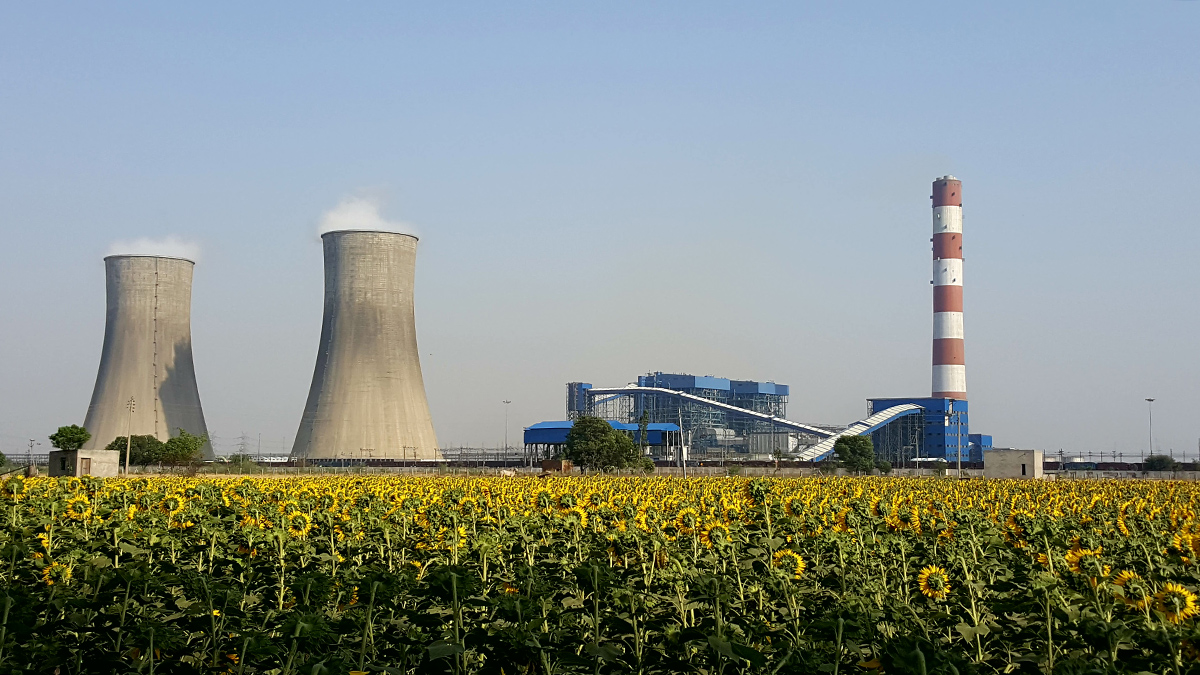Coal-fired power plants in India—responsible for generating 73.4% of the country’s electricity—are bad for the country’s wheat. A new study shows that nitrogen dioxide (NO2) emitted from the plants can affect agricultural productivity on farms up to 100 kilometers away and reduce crop yields for wheat and rice in particular.
“Our primary finding here is that nitrogen dioxide emissions from the coal electricity generation sector are associated with meaningful crop loss in certain parts of India.”
Farms across the states of Madhya Pradesh, Uttar Pradesh, and West Bengal are especially vulnerable to NO2 emissions. Research indicated that annual crop yield losses in these states exceeded 10% over what was expected between 2011 and 2020.
“Our primary finding here is that nitrogen dioxide emissions from the coal electricity generation sector are associated with meaningful crop loss in certain parts of India,” said Kirat Singh, one of the study authors and a Ph.D. student at the Doerr School of Sustainability at Stanford University.
Making the Model
To understand the relationship between coal plant emissions and crop productivity, Singh and his fellow researchers gathered data on the presence of nitrogen dioxide from the Tropospheric Monitoring Instrument (TROPOMI) on board the European Space Agency’s Copernicus Sentinel-5 Precursor satellite. They integrated other satellite data on vegetation as well as datasets on electricity generation and weather.
The scientists were ultimately confronted with the challenge of teasing apart the source of the gas. “We built a model to determine what portion of total can be linked to emissions from coal power plants,” Singh said. The model uses changes in wind direction to try to isolate pollution that can be linked to emissions from specific sources, he explained.
The results, published in the Proceedings of the National Academy of Sciences of the United States of America, show that in certain regions heavily exposed to coal emissions, yields are more than 10% lower than they would have been in the absence of emissions from coal-fired power plants.
Agricultural Benefits for Improving Air Quality
This is a case of direct toxicity, said Jennifer Burney, a professor of environmental social sciences and Earth system science at Stanford’s Doerr School who was not involved in the study. “The plant might be taking [NO2] in through stomata or protecting itself against it by not respiring,” said Burney, who has conducted several studies assessing the impact of air pollution on agriculture.
In addition to acting as a toxin itself, nitrogen oxide is also one of the precursors of ground-level ozone, a major component of smog, according to Lisa Emberson, an environmental pollution biologist in the Department of Environment and Geography at the University of York. “Ozone is formed as sunlight drives chemical reactions between nitrogen oxides and volatile organic compounds such as methane,” she said. In her own research, Emberson has found that ozone pollution also affects the nutritional content of grains.
The study strengthens the links between air quality and India’s food security and economic progress, its authors conclude. “For Indian policymakers and regulators, these findings mean that there are potentially very substantial, and previously unaccounted-for, agricultural benefits from improving air quality through controlling emissions at coal power plants,” Singh said.
—Pragathi Ravi (@pragathi_r24), Science Writer

